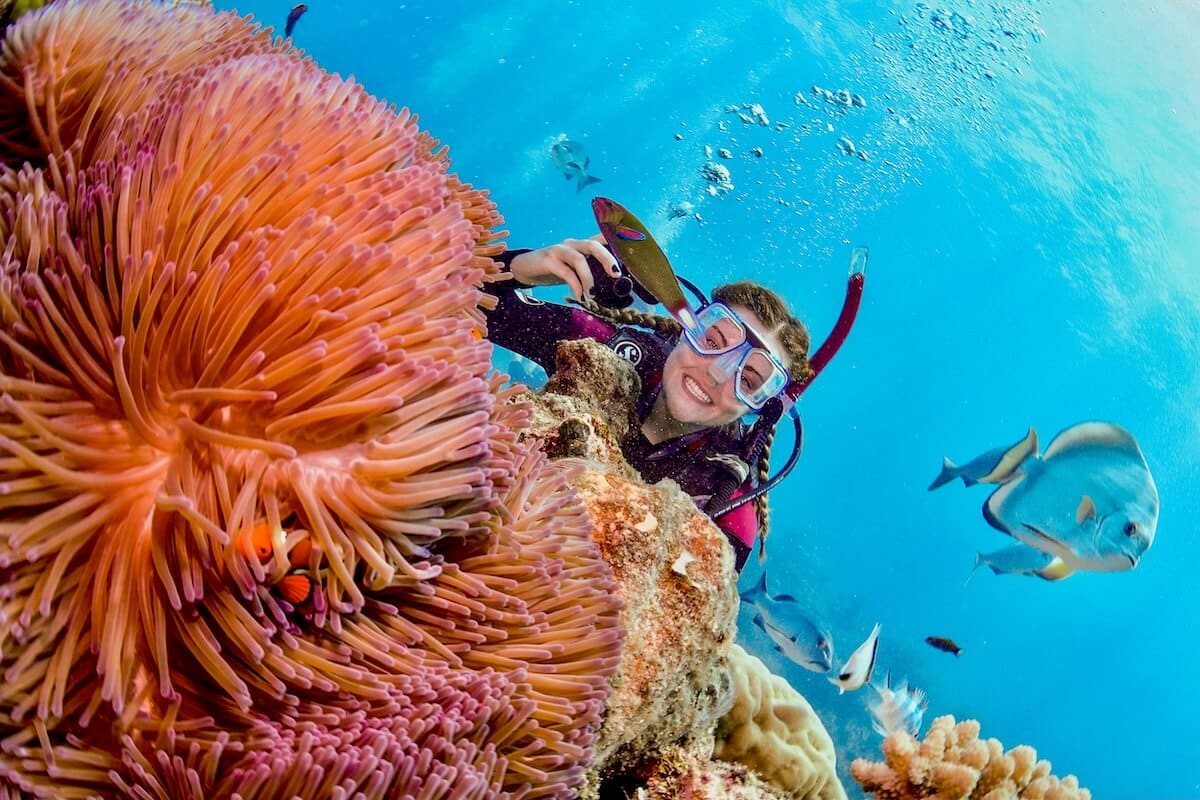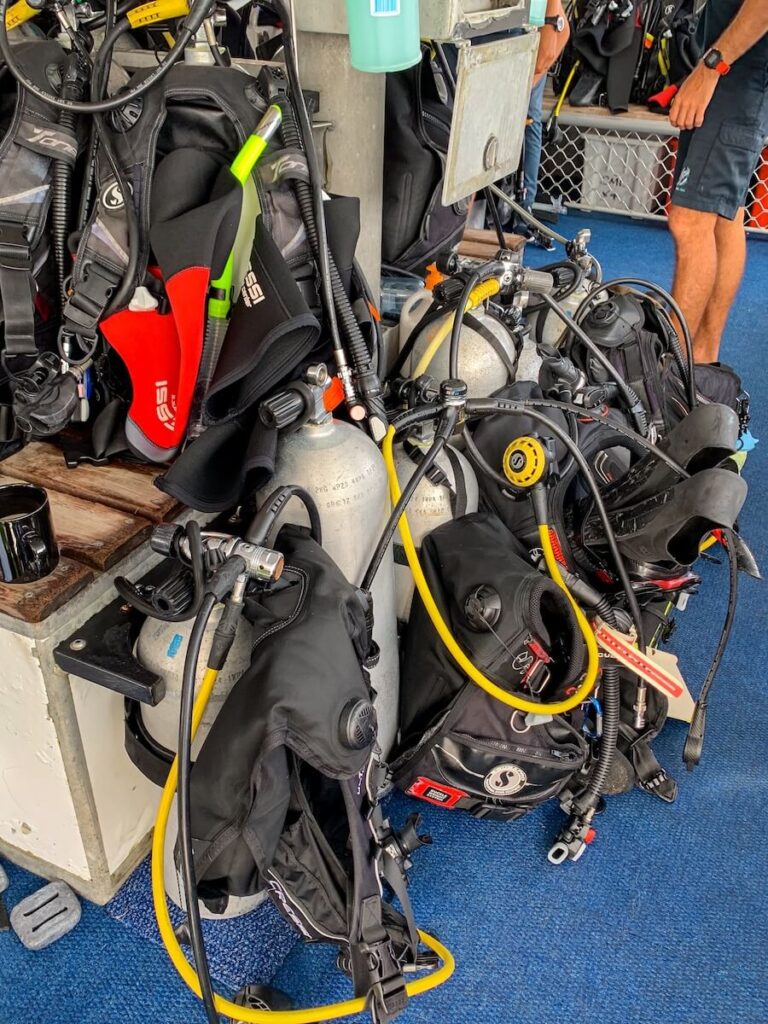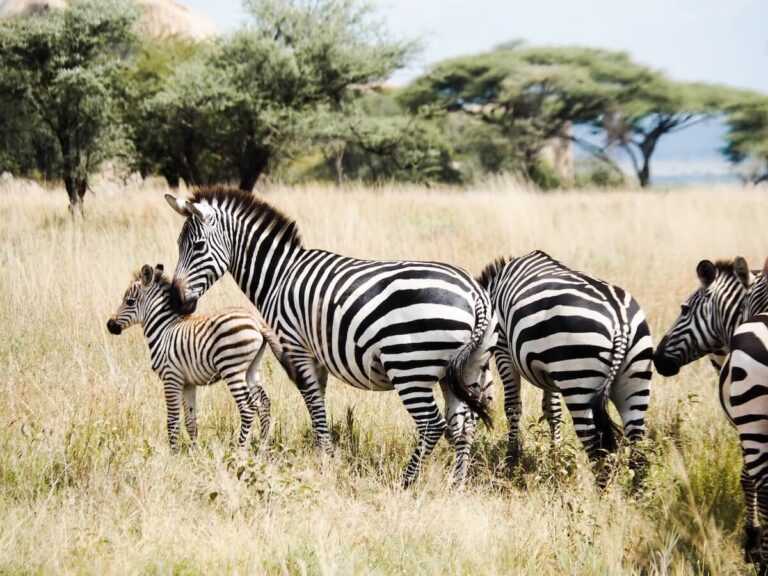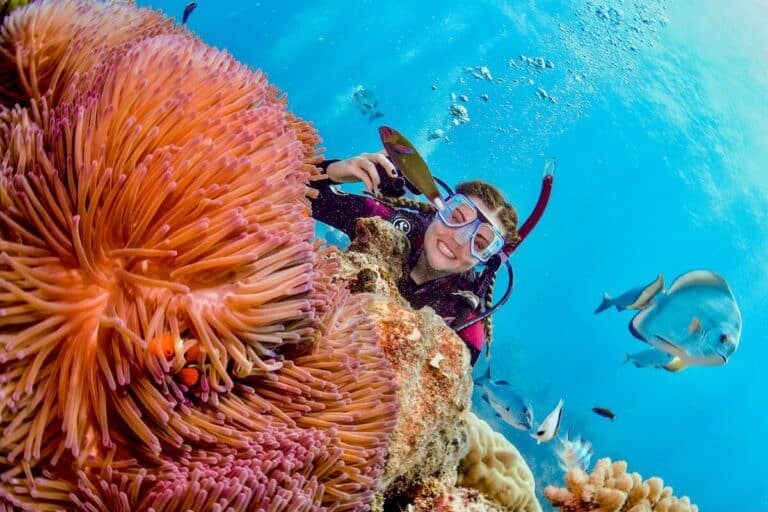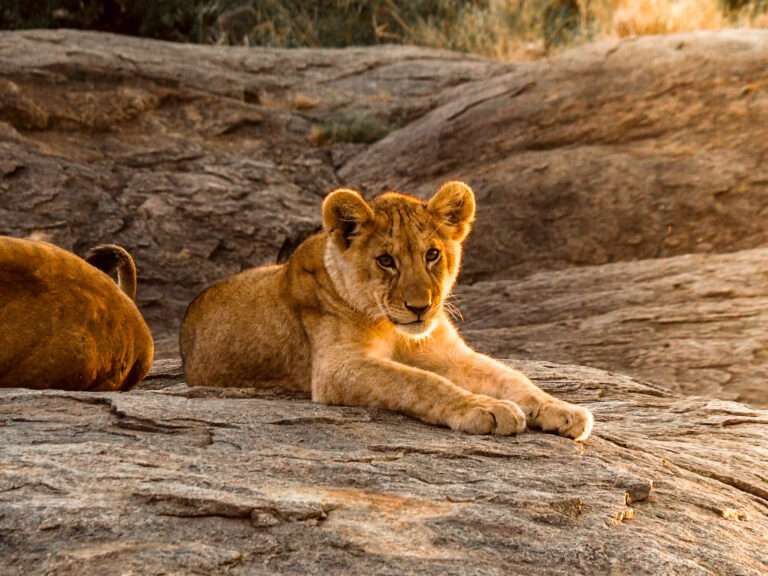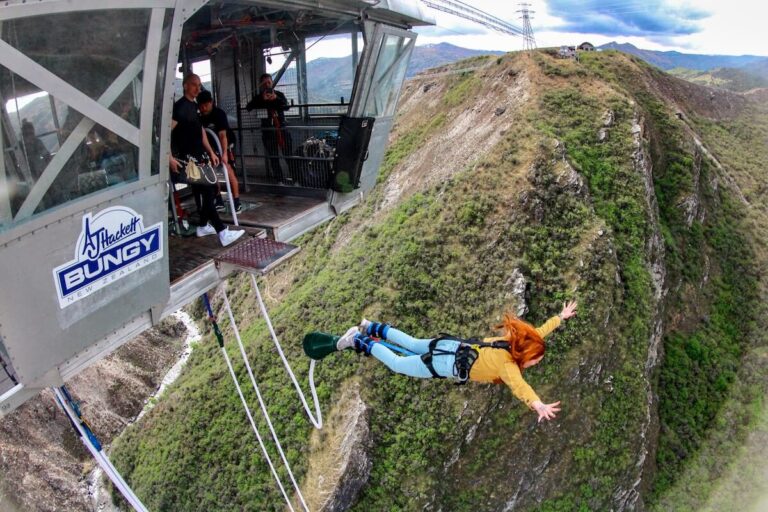Is Scuba Diving The Great Barrier Reef worth Your Bucket List?
*This site may contain affiliate links from trusted travel partners. When you purchase through a link on this site, I may earn an affiliate commission at no extra cost to you. Thank you So much for your support!
I am not sure if it is just me, but scuba diving the Great Barrier Reef always seemed like the creme de la creme.
Maybe it was because it is one of the 7 natural wonders of the world or the fact that it is the world’s largest reef system, but it was no surprise that scuba diving the Great Barrier Reef had always been at the top of my list.
And if this is on your bucket list too, then you have come to the right place!
My Bucket List Review of Diving the Great Barrier Reef
| Category | Scuba Diving |
| Who Needs to Add This to Their Bucket List? | Scuba divers and fish lovers |
| Best Time to Go | December – February |
| Traveling Difficulty | Easy |
| Physical Difficulty | Moderate |
| Popularity Rating | 9/10 |
| Group/Tour Required | Recommended |
| Budget | $$$ |
| Wheelchair Accessible | No |
| Favorite Tour | Great Barrier Reef Snorkeling and Diving Cruise from Cairns |
| Favorite Place to Stay (Cairns) | Crystalbrook Flynn |
If you need more information about the categories of this table, please check out the Bucket List Reviews guide.
Should the Great Barrier Reef be added to your bucket list?
When they say that this is the largest reef system, they are not joking. The Great Barrier Reef has almost 3,000 individual reefs and 980 islands, and it stretches 2,600km.
Combine that with the fact that it has a wide variety of species, you get one hyped-up bucket list item!
Is this the best diving destination in the world? That depends.
I think that there are other locations that provide richer diving experiences. However, I think that the Great Barrier Reef is so widely known and covers such a massive region that it is still an incredible bucket list experience.
Plus, because it is so popular, there are more incredible opportunities for newer divers or divers looking to get certified compared to other diving locations in the world:
That is why if you ever get a chance to go Great Barrier Reef diving, you should definitely hop on it (or should I say, “dive in it”?)
Great Barrier Reef Diving Season
- December-February: good visibility, warmest water
- August-December: less rain and wind, good visibility
- June–November: minke and humpback whale spotting as well as the coral spawning
- April-September: manta ray and hammerhead spotting
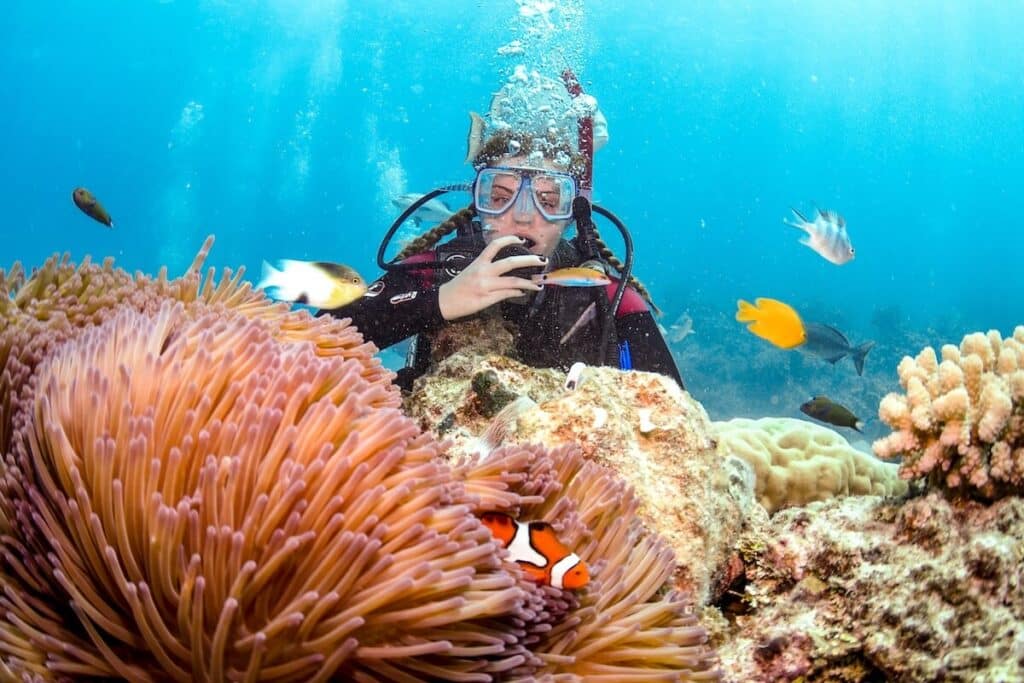
You might think that the best time to go would be during summer (so during our winter season because Australia’s seasons are backward). However, November to May is also stinger season.
However, if you want to go from December to February, it has the best visibility and warmer water.
Don’t worry—the weather and water temperatures are still nice from May to November if you go in winter! I went in September and had no issues. The water was actually a very good temperature!
Best Time to Scuba Dive the Great Barrier Reef
So, you might ask: what is the best time to scuba dive the Great Barrier Reef? My advice would be to create a list of what you would like to see.
Maybe you would like to see whales? Visibility of coral reefs as var as the eye can see? Manta rays?
Once you figure out what is the most important dive aspect on your bucket list, then you can work backwards and figure out the best time for you to dive the Great Barrier Reef in Austrailia.
The Great Barrier Reef offers good conditions all year, unlike many other diving sites so you really can’t go wrong.
I would also make sure to talk to your company and/or dive master to make sure you are aware of any safety hazards while scuba diving.
How to Get to the Great Barrier Reef
There are several towns in Australia along the coast that you can depart from via boat, but the most popular are Port Douglas and Cairns.
Obviously, you are going to need to hire a diving company or boat to take you out to the reef.
Unless you are a real mermaid and plan on swimming there yourself!
Cairns
Let me start by saying that I departed from Cairns. I chose this because it seemed to be the most popular place to depart for the reef and had more adventurous excursions besides diving.
Overall, I had no issues with it! It was a nice town and the reef was amazing! I think that if I ever go again, I would like to try Port Douglas or one of the other less touristy ports.
Port Douglas
If I am being honest, I have heard mixed things about Port Douglas. It is about 45-60 minutes from Cairns. I know that it is closer to the outer reef and offers more laid-back diving experiences.
There are fewer tour operators. I met a guy on the boat that I was on that said the diving is a bit better out there. Do we believe him? I’ll leave it up to you!
Townsville
Another great option for diving and snorkeling the Great Barrier Reef is Townsville. This is a more quiet and laid-back alternative to Cairns and doesn’t have as many tour groups.
This is far north Queensland and is a short ferry ride from the idyllic Magnetic Island.
Great Barrier Reef Diving Tours
Where to Stay Near the Great Barrier Reef
Budget
medium
Luxury
Find Your Own accommodation for the Great Barrier Reef
Best Dive Sites in The Great Barrier Reef
- Agincourt Reef: This one is on the northern end near Cairns. It is perfect for beginners and you can see the amazing Wonder Wall, where the coral wall drops 40 m (131 feet).
- Whitsunday Islands: Comprised of 74 islands, this paradise is home to dives made for every level and sport an abundance of marine life.
- Museum of Underwater Art: Here’s a unique idea–go to a museum…in the Great Barrier Reef? MOUA is a marvel, known for its underwater greenhouse at John Brewer Reef.
- Capricorn and Bunker Reefs: This is a group of 22 reefs that offer a plethora of incredible bucket list experiences for all divers. One of the most popular among snorkelers and divers is Fitzroy Reef.
- Tangalooma Wrecks: There are a cluster of ships off of Moreton Island. These ships now are home to a wide variety of marine life (with some that you’ve never even heard of)! I’m talking about wobbegongs and dugongs if you are lucky!
- Wonder Reef: Just off of the Gold Coast, this has 9 underwater sculptures and is the world’s first buoyant dive site!
- SS Yongala Shipwreck: This shipwreck sank back in 1911 due to a cyclone. Today it is one of Australia’s largest (and most intact) wrecks. Because of the currents, it is recommended for more advanced divers.
Tips for Diving the Great Barrier Reef
Remember your sea sickness pills
Keep in mind that the reef is a way outside of Cairns (maybe a little less if you are departing from Port Douglas).
However, if you are easily seasick, I would make sure to pack some seasickness pills just in case. This is a big bucket list moment and it would suck to have it ruined by a bad case of seasickness!
Consider a liveaboard
Behold my own bucket list! I have always wanted to try a lifeaboard! *Wink wink* if you are a liveaboard company please take pity on me.
When I was on the boat, there were several people who were going to transfer to a liveaboard. Basically, you sleep on the boat and do a 2/3 tank dives a day.
Wear a stinger suit if needed (ask your guide)
Stinger season is normally when the water is warmer. It is normally from October/November until May.
Ask your company and/or dive master about any concerns you may have and if you need to wear a stinger suit.
Think about renting an underwater camera
If you are into any sort of photography, this reef is a goldmine for amazing photos.
Even if you do not have expensive underwater gear, I found that a lot of places in Cairns (or even the dive company) give you the option to rent photography gear.
This is awesome memorabilia and you might get some amazing shots under the water!
My Personal Experience with Diving the Great Barrier Reef
This experience has always been very high on my bucket list. Therefore, when I was visiting Australia in September, I made a special trip to Cairns just to dive into the reef.
I was very very nervous due to the fact that my ear had been wrapped and under strict orders to not get wet for the past three months. So this was the first time that it was officially submerged—and it was oh, so worth it!
I flew into Cairns a few nights before. There are some other really fun things to do in this coastal town but, as I mentioned before, I flew in just to cross this off of my bucket list.
Diver’s Den Great Barrier Reef Review
The company I went with was Diver’s Den, which operates tours out of Cairns. This provided me with a nice day trip and two tank dives.
Once we got to the boat, we relaxed and had a safety briefing. The trip from the coast to the actual reef was about an hour or so. However, it may be up to 2 hours depending on how far you go out.
There were quite a lot of people on the boat itself. Many guides and tours were going out at different times. Since I was PADI certified and without a buddy (I was traveling solo), I was put into a group with another couple and a buddy for me.
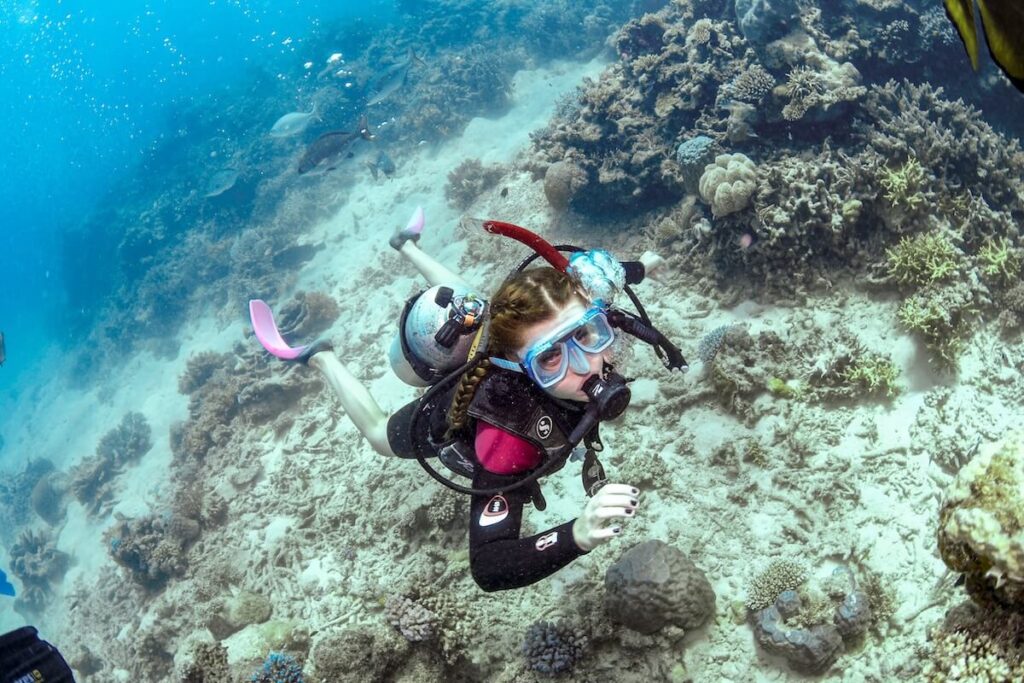
We hung out, ate some food, talked about diving stories, and enjoyed the view while we waited for our turn.
Once it was our turn, we got ready and created a dive plan together. One thing that I really loved about this company is that it gave our group freedom in regard to drafting our own diving plan. Together, we decided that we would see most of the reef and then head to a bit deeper waters for a chance to see more wildlife.
Once we decided, we buddied up again and took the leap into the water.
Conditions Under the Water
I have heard rumors that some of the coral was dying due to human interaction and whitewashing. Although I did see some of this in some of the dive spots, the coral was alive and thriving in some spots! But, oh the FISH!
This was truly a thriving ecosystem. I have never seen such a diverse group of fish, coral, and other marine life than when I went Great Barrier Reef diving.
For my diving enthusiasts—you know how in your dive log there is normally a section where you write what you saw/did? I literally ran out of room. It was unbelieveable! I think that the only place where I saw a more thriving coral ecosystem was Fiji.
My personal favs were the parrot fish and the black-tip reef sharks. I was truly in my own mermaid heaven!
When we went to a deeper section of the reef, it only seemed to liven up more! There was a point where I was on my back swimming and a turtle swam up my body and over my head!
My Favorite Part of the Dive
Suddenly, out of nowhere—the woman from the couple that I had made friends with swam over to me and grabbed my hand.
I looked at her stunned facial expression. Thoroughly confused, I scanned my environment ready to put my emergency diving training to use.
I soon realized that she was looking straight ahead and there she was: a whale in the distance. I don’t know if I was just in the moment or if I had always wanted to dive with a whale, but I just started crying.
Definitely a bit awkward in a mask but what can you do? After we got out of the water, the guide said that it was his guess that it was a dwarf minke whale or a humpback, but it was too far away to tell for certain.
Either way, I was in complete awe and it was one of the coolest moments I have had so far scuba diving!
Things to Keep in Mind When Diving the Great Barrier Reef
Stingers
As I mentioned before, you might want to avoid the summer season because it is more likely you will run into stingers. But what exactly is a stinger?
Here’s a quick safety lesson—stingers are a subspecies of jellyfish. The most common stingers in the reef are the box jellyfish and the Irukandji. These are extremely venomous and potentially lethal.
Box jellyfish have a box-shaped bell with up to 15 tentacles and produce a sharp burning sensation when stung. The Irukandji are much smaller and are harder to spot. Most people do not feel the sting and feel symptoms up to an hour later.
Talk to your dive master for more information and see if you are in or near a jellyfish habitat (most guides and tours are not).
If you are stung, inform the dive crew and captain immediately, pour vinegar over the area, and (IMPORTANT) contact emergency services as soon as possible!
You can rent a stinger suit (and might want to anyway), but you can also just decrease your risk and avoid it and go from June–September.
Some Reefs are very Crowded
Depending on what dive site your tour operates out of, it can be crowded. It is, after all, one of the most popular tourist destinations in Australia. This isn’t always ideal for diving, but it isn’t the end of the world.
If you want a more intimate experience, I would suggest going with a company that visits more of the Great Barrier Reef hidden gems. These might require more dive experience since the “beginner” reefs are the ones that are often visited by the mainstream dive companies.
You could also depart from a lesser known port such as Townsville to gain access to the less trafficked dive sites.
I would also recommend a liveaboard option for this because you can go deeper into the reefs than the day trip options.
Tours May be Crowded
With most tours, they have multiple dives going at once at all different times.
For example, my boat was carrying a crap ton of divers. We then split into groups and buddied off. Then, different groups went at different times.
I did a 2 tank dive at 2 different spots!
This personally didn’t bother me, but it is something to be aware of if you are looking for smaller group sizes. Always check your tour to make sure you are content with the size of the tour.
If you are looking for private or smaller group sizes, this is available, but can get expensive.
There are other ways to see the Great Barrier Reef
If you are not into diving, you don’t have to cross it out on your bucket list! There are plenty of other ways to see the Great Barrier Reef besides an oxygen tank.
Snorkeling
For example, there are lots of opportunities to snorkel! This is a more beginner friendly way to see the reef and doesn’t involve expensive scuba training beforehand.
Flying
Don’t want to get wet? How about flying over the Great Barrier Reef? That’s right! Another popular way to see this epic natural landmark is taking a helicopter or plane over it!
Helicopter
Plane
Reef Suites
And, of course, if you are ready to really step into luxury, there are yachts where you can sleep with floor to ceiling windows with views of the Great Barrier Reef…underwater.
Enough said.
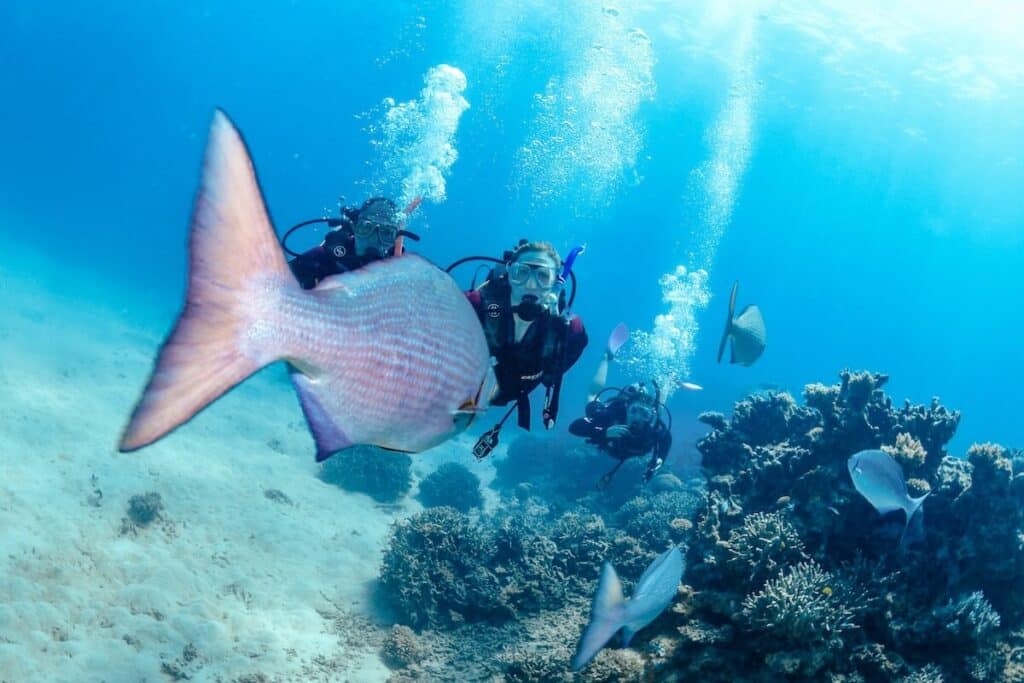
Fun Facts About the Great Barrier Reef
How Big Is the great Barrier Reef?
The Great Barrier Reef is so big that it is the size of 70 million football fields.
You can even see it from space!
There are too many species to count
When I say that the ecosystem was booming, I really mean it. Normally the population of marine life has been quite limited, but it was not the case with the Great Barrier Reef.
Even though I have seen healthier coral reefs (*cough cough FIJI), nothing has compared to the diversity of species in this massive reef!
In fact, they said that there are more than 1,625 species of fish and 10% of the world’s fish species inhabit the reef!
- 30 species of whale, dolphin, and porpoise
- 6 species of turtles.
- 600 species of soft and hard coral.
Coral comes from polyps
Tiny marine creatures that have sac-like bodies and tentacles that use calcium and carbonate ions to give it its rock-like structure.
These creatures have symbiotic relationships with algae—they absorb light from the sun and then feed coral and give them their bright colors.
They are actually nocturnal and during the night the polyps come out from their casings and catch any small creatures passing by.
They only spawn once a year when the polyp releases its genetic material into the water. A single polyp can start an entire reef!
The Great Barrier Reef is one of the most popular attractions in Australia
This generates a lot of money that can be contributed to reef protection. This draws in over 2 million people per year!
Looks like I am not the only one who wanted to cross this off of their bucket list!
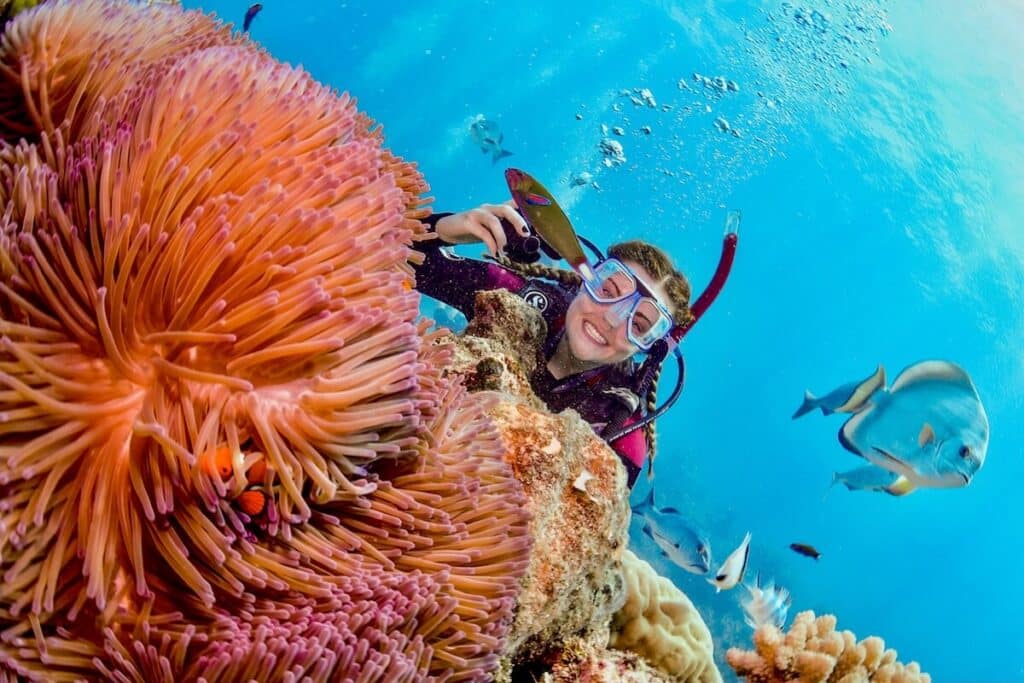
How You Can Protect the Great Barrier Reef
Unfortunately, as with many other things, the reef is in danger due to climate change and human interaction.
With the rising sea temperatures, the coral is at greater risk of bleaching and death.
The rising number of tourists and pollution also causes the coral to bleach and die. Bleaching just means that the polyps kick out the algae.
This doesn’t cause the coral to immediately die but loses its color and their main food source. This can increase the risk of starvation and disease. This can happen because of divers touching the coral, leaving trash in the water, or introducing sun creams or lotions to the reef.
Therefore, if you are going to take part in this incredible diving activity, it is VERY important that you do your best to take care of the reef and preserve its beauty! Here are some things that you can do to do your part in the conservation of the reef!
Use reef-protected sunscreen
Some ingredients can be very harmful to the coral! Make sure to only use reef/coral-friendly sunscreen.
Or take the even better option and get a long-sleeved rash guard! I have worn this multiple times and it has been more effective than sunscreen.
Shower before you enter the water and don’t use any beauty products beforehand.
Make sure that you don’t have any beauty products on your skin when you enter the water. Trust me–the fishies don’t care if you are beautiful when you visit them ☺️
Don’t touch the coral
Sometimes this is unavoidable. However, it is your responsibility as a diver to do your best to not touch the coral and damage any ecosystem.
Make sure that you are trained enough before you dive so that you can leave as little trace of your presence as possible.
Do you have a trip planned to the Great Barrier Reef? Make sure to follow my on social media and tag me so that I can cheer you on when you are crossing this incredible activity off of your bucket list!
Adventure Bucket List Resources
I am here to help your travel adventures go as smoothly as possible! That way you can check off that bucket list with minimal complications and spending!
SHOP – Shop the best adventure gear and essentials on my Amazon Storefront – handpicked by a full-time adventuring mermaid!
AIRFARE – It is no surprise that like many travelers, I have found that Hopper is one of the best resources to use when finding cheap flights.
ACCOMMODATION – My two favorites are Booking.Com for hotels and VRBO for rentals.
GUIDED TOURS – If you are looking for quick and easy tours, check out GetYourGuide and Viator.
MULTI-DAY TOURS – For more in-depth tours that span several days, TourHub has many great options with reputable travel companies. Use my code (ALEXANDRA1GURU) for up to 5% off your next bucket list adventure.
TRANSPORTATION – You can either rent a car yourself with Discover Cars or do a guided bus tours like Big Bus Tours.
CREDIT CARD – I always use my Chase Freedom Unlimited card for all of my purchases. There is no annual fee and you get 1.5% cash back and 5% cash back on travel purchased through Chase Travel.
SIM CARDS – Avoid expensive roaming charges with an eSim card with Airalo.
TRAVELER’S INSURANCE – Check out VisitorsCoverage for affordable insurance plans.
If you liked this article, don’t forget to subscribe and share the article below so that I can continue bringing you the best bucket list mermaid content!

